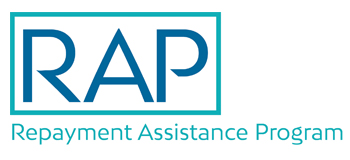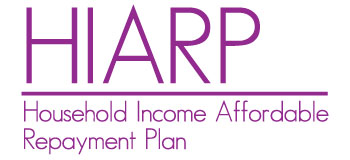RAP and HIARP Information
Para ver en español, por favor haga clic
aquí.
HESAA recognizes that NJCLASS borrowers and their families sometimes run into financial hardship. That's why HESAA introduced two programs to help give repayment relief to families who are working to avoid default: Repayment Assistance Program (RAP) and Household Income Affordable Repayment Plan (HIARP). These two programs work in tandem by helping those who qualify for up to two years in RAP, followed by possible future assistance through HIARP. Details, eligibility, and application information are below.

The Repayment Assistance Program (RAP) is designed to provide payment relief when all parties to the loan are facing financial hardship. Borrowers with eligible loans can enroll in RAP for up to two years (730 days). During the RAP period, a payment on eligible NJCLASS loans shall be reduced to 10% of the total of the household income of all of the parties to the loan that exceeds 150% of the federal poverty guideline for their family size, with a minimum monthly payment of $5 per eligible loan. Interest that accrues during the RAP period will be paid by HESAA. All other payments received during the RAP period shall be applied to reduce principal.
RAP is available for Standard NJCLASS loans*. Eligible loans include loans in interest-only repayment, or loans in principal and interest repayment. Loans that are deferred for both principal and interest payments are not eligible for RAP. Loans that have reached default status are also not eligible for this program. All parties to the loan must complete the application and provide the required documentation so that eligibility for the program can be evaluated. HESAA reserves the right to make a final determination on eligibility. Enrollment in RAP is subject to the availability of funds.
* NJCLASS Consolidation Loan and ReFi+ Loan disbursed between 2017 and 2019 may be eligible for RAP as disclosed in the Terms and Conditions of the loan.




The Household Income Affordable Repayment Plan (HIARP) is designed to provide additional payment relief when all parties to the loan still continue to face financial hardship after exhausting of their two (2) years of RAP eligibility.
HIARP is available for Standard NJCLASS loans. NJCLASS Graduate/Professional loans, Refi+ and Consolidation loans are not eligible for HIARP.
Through the HIARP program, monthly payments on eligible Standard NJCLASS loans shall be reduced to 15% of the total of the household income of all of the parties to the loan that exceeds 150% of the federal poverty guideline for their family size, with a minimum monthly payment of $25 (“Reduced Payments”). The repayment term for loans in the HIARP program will be extended to 25 years from the date of origination and any remaining balance at the end of 25 years will be forgiven. During the HIARP period interest continues to accrue on the loan. Amounts forgiven after 25 years may be taxable to the borrower. If an amount forgiven is in excess of $600, HESAA is required by the IRS to issue a 1099-C. HESAA does not provide tax, legal or accounting advice. This material has been prepared for informational purposes only, and is not intended to provide, and should not be relied on for, tax, legal or accounting advice. You should consult your own tax, legal and accounting advisors before engaging in any transaction.
Eligible Standard NJCLASS loans include loans in interest-only repayment, or loans in principal and interest repayment. Loans that are in a deferred status for principal and interest payments are not eligible for HIARP. Loans that have reached default status are also not eligible for this program. All parties to the loan must complete the application and provide the required income verification documentation so that eligibility for the program can be evaluated and re-evaluated each subsequent year. HESAA reserves the right to make a final determination on eligibility. Enrollment in HIARP is subject to the availability of funds.




